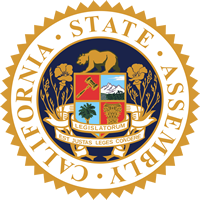Protecting communities from hospital closures and helping small, rural, district and struggling hospitals achieve seismic compliance
SACRAMENTO–AB 869, by Assemblymember Jim Wood (D-Healdsburg), was signed by the Governor on Saturday. Wood introduced AB 869 in 2023 to protect patient access to small rural and district hospitals in danger of closing due to the many challenges meeting seismic safety compliance requirements.
“Many years ago I made a commitment to fight for rural communities,” said Wood. “I’m also passionate about ensuring access to quality and affordable health care for all Californians. This bill does both. These hospitals are literally lifelines to Californians and have had an uphill battle both finding the funding and other resources for achieving seismic compliance and understanding exactly what seismic solutions are needed to meet the requirements.”
Earthquakes are endemic to California and existing law establishes timelines for hospital compliance with seismic safety standards requiring retrofitting or rebuilding hospitals to withstand earthquakes and remain operable or be removed from acute care service by January 1, 2030.
“We know the State of California wants all hospitals to meet their seismic requirements sooner rather than later, and I couldn’t agree more,” said Wood. “We are thankful to the years’ long assistance that staff within the state departments and the Administration provided in making this bill a reality.”
AB 869 provides small, rural, district and financially distressed hospitals with the opportunity to request the Department of Health Care Access and Information (HCAI) to grant an up to three-year delay in their seismic safety compliance requirements; allows HCAI to approve an additional up to two-year delay for hospitals that continue to be in financial distress or need to address contractor, labor, material delays, acts of God, governmental entitlements or other circumstances beyond the hospitals’ control. In both cases, a hospital is required to provide HCAI with a proposed compliance plan, and meet agreed-upon progress milestones in order to receive the delay.
AB 869 also expands eligibility for the Small and Rural Hospital Relief Program and provides, when available, grants to those hospitals to secure Structural Performance Category-4D assessments and plan for their 2030 seismic safety compliance requirements.
“These smaller hospitals are often the only hospital a community has within a hundred miles and their resources are often scarce compared with larger urban hospitals,” said Wood. “They want to meet their seismic requirements and this legislation gives them the support they need and a roadmap to compliance while still meeting the critical care their communities desperately need. It’s been a long process, but am proud to have been part of the solution.”
# # #

